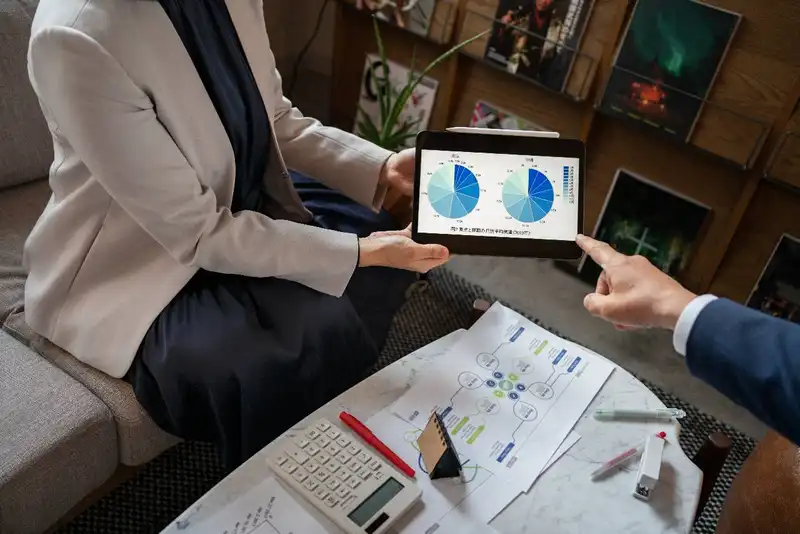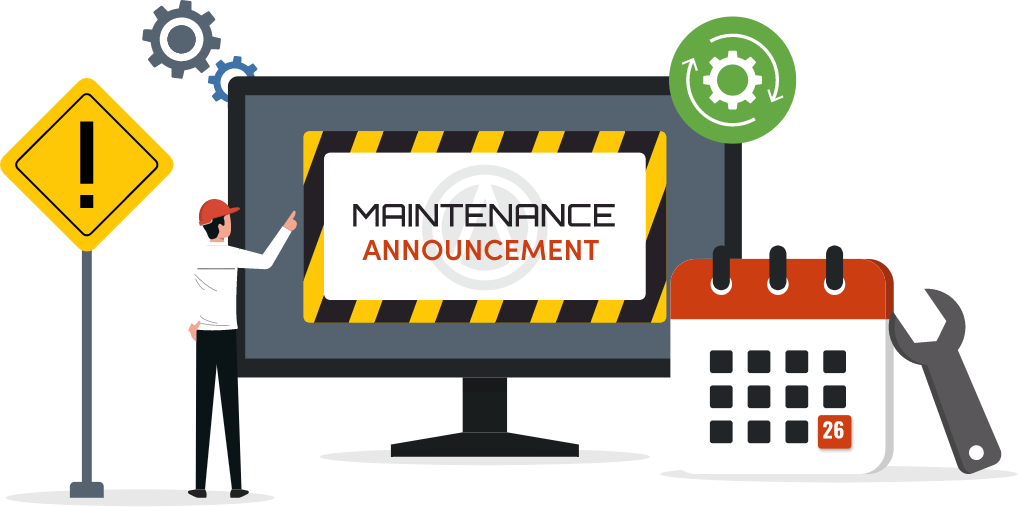What is a consumer metric?
A consumer metric is a measurable data point that reflects customer behavior, preferences, or interactions with a business. In restaurants, these metrics help owners understand patterns like visit frequency, spending habits, and menu popularity to make informed decisions.
Top 5 Consumer Metrics Every Restaurant Should Track
Overview
Owning a restaurant isn't just about cooking tasty food or creating a cozy atmosphere - it's also about really knowing your customers. What do they like? How often do they visit? How much do they usually spend? These are not just guesses or feelings; they are numbers you can track to make your restaurant better every day.
In fact, studies show that restaurants using customer data can increase their profits by up to 15-25% because they understand what their guests want and how to serve them best. Without these numbers, many restaurants end up wasting money - on the wrong menu items, unnecessary staff during quiet hours, or marketing that doesn't work.
But here's the good news- you don't need to be a tech expert or run a giant chain to use this information. Whether you own a small diner or a trendy coffee shop, a few simple numbers - called consumer metrics - can help you make smarter decisions.
Metric 1. Customer Frequency (Visit Rate)

One of the most important things every restaurant owner should know is how often customers are coming back. This is called customer frequency, or visit rate. In simple words, it means - how many times does the same person eat at your restaurant in a certain period - like a week, a month, or even a year?
Why does this matter so much? Because regular customers are the heart of any successful restaurant. Research shows that loyal customers spend up to 67% more than new ones. These returning guests are not only more likely to try new menu items or recommend your place to friends - they also bring in steady income you can count on.
If you're not keeping track of this, you could miss signs that your customers are not coming back as often as they used to. Maybe they didn't like a recent menu change. Maybe the service was slow last time. Or maybe they just forgot about your place because you haven't reminded them with a friendly promotion or offer.
So how do you track customer frequency? It's easier than you might think. Many modern Point of Sale (POS) systems, online ordering apps, and loyalty programs can count how often a customer visits. Even simple tools like a punch card for coffee shops can give you an idea of who your regulars are.
Once you know your customer frequency, you can do a lot with this information. You can offer rewards to frequent visitors, send special deals to those who haven't been back in a while, or simply thank your loyal fans. A small effort to keep regular customers happy can make a big difference for your restaurant's success.
Metric 2. Average Order Value (AOV)
The next important number every restaurant owner should pay attention to is called Average Order Value (AOV). This tells you how much money, on average, each customer spends when they visit your restaurant. It's a simple but powerful way to understand how much each sale is really worth to your business.
To calculate AOV, just divide your total sales by the total number of orders in a certain period (like a day, week, or month). For example, if your restaurant made $5,000 in sales from 200 orders last week, your AOV would be $25 per order.
Why is this number important? Because knowing your AOV helps you figure out how to make each customer spend a little more when they visit. A small increase in AOV can make a big difference in your total income over time. Studies show that upselling and cross-selling can increase sales by 10-30% if done properly.
There are many easy ways to improve AOV without pushing customers too hard. You can suggest extra sides, offer meal upgrades, promote combo deals, or recommend desserts and drinks. For example, if someone orders a burger, your staff could gently offer to add fries and a drink for a small extra cost. Many people are happy to accept a good deal if it's suggested in a friendly way.
Menu design also plays a role. Featuring higher-margin items at the top or highlighting customer favorites can guide choices. Even seasonal offers or limited-time items can encourage guests to try something extra they didn't plan on ordering.
Remember, the goal isn't to force customers to spend more - it's to gently help them discover more of what your restaurant offers. Tracking and improving your AOV not only raises your profits but also enhances the overall dining experience by offering customers more value and customer satisfaction.
Metric 3. Peak Hours and Traffic Patterns
Knowing when customers visit your restaurant the most - and the least - is just as important as knowing how often they come or how much they spend. This is where tracking peak hours and traffic patterns becomes useful. It shows you the busiest and quietest times of the day, week, or even month.
Why does this matter? Because this knowledge helps you make smarter decisions about staffing, food preparation, and marketing. For example, if you know that lunch on weekdays is usually busy between 12-00 PM and 2-00 PM, you can make sure enough staff is available, the kitchen is ready, and popular lunch items are well-stocked. On the other hand, if Tuesdays after 3-00 PM are always quiet, you may decide to reduce staff during that time to save labor costs or run a special offer to attract customers.
Many restaurants struggle because they either over-staff during slow times or under-staff during busy hours, leading to wasted money or poor customer service. A report by Restaurant Technology News showed that restaurants using data to plan staffing and food prep reduced labor costs by up to 10% and food waste by 15%. That's real money saved just by understanding customer flow.
Tracking peak times is easier than ever. Your Point of Sale (POS) system likely records the time of every sale. You can also use reservation systems, delivery app data, or even simple observation to spot patterns. Some restaurants install foot traffic counters at the door to track customer entries throughout the day.
This information can also guide promotions. If your slowest time is mid-afternoon, you could introduce a happy hour or coffee and cake deal to draw in customers.
Metric 4. Customer Lifetime Value (CLV)

Another important number every restaurant owner should know is Customer Lifetime Value (CLV). This is a way to measure how much total money one customer is likely to spend at your restaurant during the entire time they remain your customer - not just on a single visit.
Why is this number so important? Because it shows you how valuable loyal customers really are. A person who visits your restaurant once a week for two years is far more valuable than someone who just stops in once while passing through. In fact, studies show that increasing customer retention by just 5% can boost profits by 25-95%. Loyal customers spend more, come back often, and recommend your place to others.
How do you figure out CLV? Here's a simple way to think about it -
CLV = Average Order Value x Visit Frequency x Customer Lifespan
For example -
If your average order value is $20, your average customer visits twice a month (24 times a year), and they remain loyal for 3 years, then -
CLV = $20 x 24 x 3 = $1,440
That means each loyal customer could bring your business $1,440 over their lifetime!
When you know this number, you can make better decisions. For example, if you know a customer could bring you $1,000 or more over time, it might make sense to spend a little extra to keep them happy - like offering a discount after a bad experience or sending them a birthday freebie.
It also reminds you why keeping current customers is usually cheaper and smarter than spending lots of money trying to find new ones.
Metric 5. Menu Item Popularity and Sales Mix
Another key consumer metric every restaurant owner should track is which menu items are the most popular and how sales are divided among different dishes. This is called tracking menu item popularity and sales mix. Knowing what your customers love to order can help you make smart choices about your menu, pricing, and kitchen operations.
Why is this important? Because not all menu items sell equally. Some dishes might be favorites that bring in steady sales, while others may rarely get ordered or may not bring enough profit to justify their place on the menu. Tracking these details helps you focus on what works and rethink what doesn't.
For example, if you notice a salad hardly ever sells, but the ingredients cost a lot, it might be time to remove it or change the recipe. On the other hand, if a certain pasta dish is flying out of the kitchen and has good profit margins, you might want to promote it more or offer a combo with a drink or dessert.
Tracking menu popularity also helps when planning your inventory. If you know which dishes are hot sellers, you can stock ingredients accordingly and reduce food waste. It also helps the kitchen prepare for busy times, ensuring your team isn't caught off guard.
Many POS Systems automatically track sales by item, making it easy to see daily or weekly trends. You can also ask your staff to share feedback on what customers talk about most or what dishes seem to fly off the shelves.
Putting the Metrics Together
Tracking each of these five metrics - customer frequency, average order value, peak hours, customer lifetime value, and menu item popularity - is helpful on its own. But the real power comes when you start looking at these numbers together. When you combine these pieces of information, you get a clearer, bigger picture of who your customers are, what they like, and how your restaurant is really performing.
For example, let's say your average order value is high, but customer frequency is low. This could mean people like to come for special occasions but not for everyday meals. In that case, you might create a lunch special or weekday promotion to encourage more frequent visits.
Or maybe you notice that your peak hours are very short and limited to dinner time, but certain menu items are extremely popular. You could use this knowledge to offer a smaller version of these items for a lunch crowd or as part of a happy hour menu to attract customers during slower times.
These connections between metrics help you make smarter decisions. You'll understand which customers are most valuable, what menu items to promote or remove, and when you should schedule more staff or prepare extra food. Without seeing how the numbers fit together, you might miss these important insights.
Also, by keeping track of these metrics over time, you can spot trends. Are customers visiting less often than they did last season? Is a once-popular menu item starting to fade? Is your average order value slowly increasing thanks to recent changes? These small details matter and can guide your daily and long-term decisions.
Summary
Understanding your customers is one of the smartest things you can do to make your restaurant more successful - and it doesn't have to be difficult. By focusing on these five simple consumer metrics - customer frequency, average order value, peak hours, customer lifetime value, and menu item popularity - you can make real improvements that benefit both your customers and your business.
These numbers are more than just data on a screen. They tell you important things - who your regular guests are, what they love to order, when they prefer to visit, and how valuable they are to your restaurant over time. When you pay attention to these clues, you can make better decisions about your menu, pricing, promotions, staffing, and service.
Remember, you don't have to track everything at once. Start with one or two metrics, like average order value or peak hours, and build from there. The key is to use these numbers to guide your choices - not to overwhelm yourself with information.
When you listen to what the numbers are telling you, you'll be able to serve your customers better, waste less food, manage your team more smoothly, and ultimately make your restaurant more profitable and enjoyable for everyone who walks through your door.
Get Started with Smart Data Capture
Optimize Your Marketing Efforts with Altametrics









































































































































































































































































